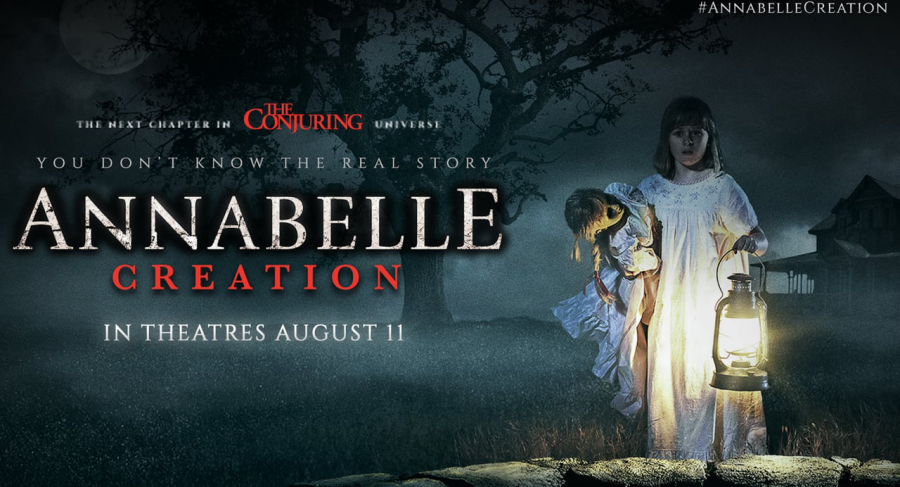Horror, more than any other movie genre, bases its success upon the director’s’ abilities to balance tone and the visual language of film. “Annabelle: Creation” (Dir. David F. Sandberg), is a prime example of a fun, spookhouse thriller, falling far short of the qualities that make a “horror film.”
A prequel to a prequel based on a five minute opening vignette in “The Conjuring” opens with the making of the Annabelle doll itself, a life-sized child porcelain figure whose creepy plastered smile and cracked face simply needs to be photographed in the right light to ring a chill up the spine. The story involves a tragic accident and grieving parents who open up their home to a group of orphan girls including Janice (Talitha Bateman), crippled by polio, Linda (Lulu Wilson from “Ouija: Origins of Evil”), and some older mean girls who ostracize Janice and Linda for being weird and different. Separated and weakened, the two friends are targeted by a spirit kept away in a locked room that the girls are specifically instructed to never enter, but, as young children always do, do so almost immediately.
“Annabelle: Creation” is a ghost story at heart: simple, hollow, and with a long monologue that explains exactly what happens in the film. However, Sandberg really works the mechanics of horror design in this film and makes the little details work.
First of all, the majority of the action never leaves the farmhouse, separating the home from the rest of society like an island. Sandberg allows the girls and the audience to tour the house early and set up the movie’s little world: Janice’s automated stair chair, a dumbwaiter, a scarecrow in the barn, a dollhouse, and the ever-present sound of the bed-ridden matriarch ringing a bell for help (that’s Miranda Otto, behind a full “Phantom of the Opera” mask most of the film). He sets up every door, device, and passageway in the house before turning the place into a sandbox of demonic toys, which gives everything a structurally perfect payoff.
The main actors in the film, Anthony LaPaglia and Otto, are given grunting one-note grieving parent roles, but Bateman and Wilson as the two young leads are terrific and real where an inferior production would have settled for cute kid antics. The movie doesn’t really treat them like kids, but puts the camera on their level and views the world from there. It’s the best set of young performances and horror from a child’s perspective since Isabella Furhmann in “Orphan.” As things on screen start to spin out into third-act craziness, the girls continue to carry the film.
Things kick off pretty quickly with the script showing its demonic hand early instead of false-alarm jumps prevalent in many horror movies. Nothing is ever a dream or just the cat. It’s surreal how committed this movie is to delivering substantive jolts.
Sandberg’s measured account starts to slip while constructing the set pieces. Things start paying off left and right wonderfully, but it appears that the more powerful the demon is, the more omnipresent it is. It’s a chaotic finale where anything goes and the audience gets so turned around that it deflates the tension. Save for an occasionally static gore shot, the movie barely indulges in its R rating and, even worse, refuses to kill off meaningful characters, leading to menacing set-ups with no punch-line deaths.
Then, weirdly, after so much thought and care, Sandberg seems at a loss as to how to bring it all in for a landing. It segues from prologue to prologue, eventually landing on a tie-back to 2014’s “Annabelle.” Why this movie would want to associate itself with such an inferior film only makes sense at the studio intervention level because now nothing can just be a sequel.





















































